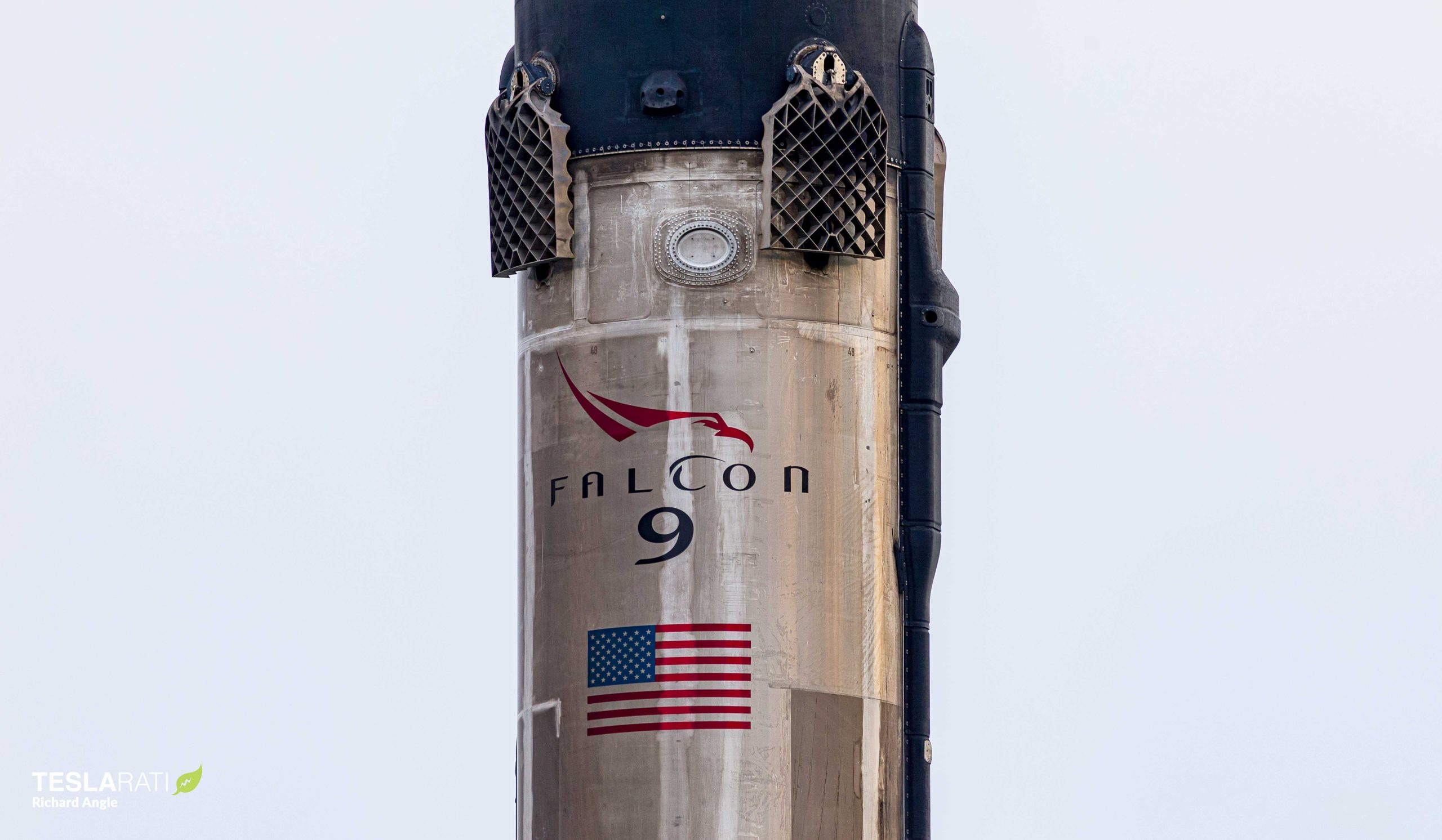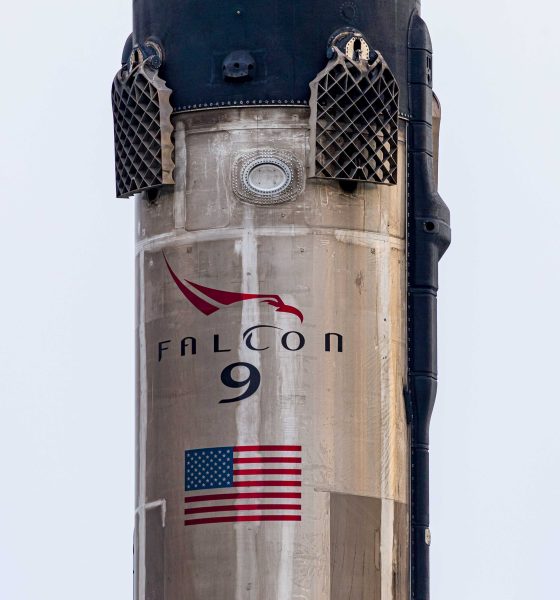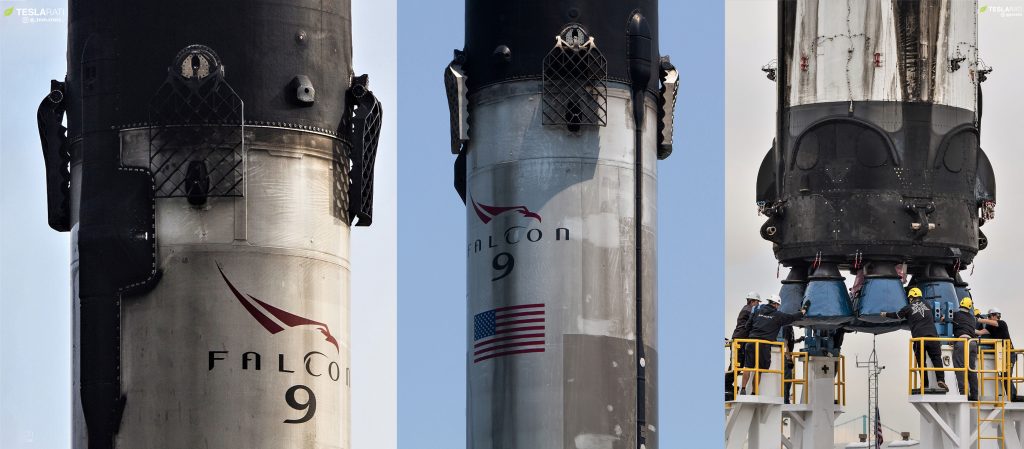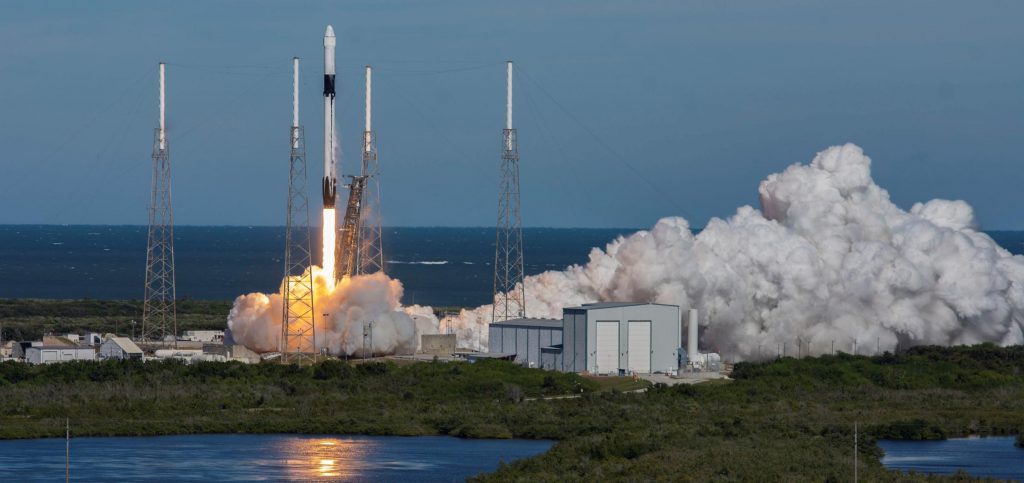

News
SpaceX’s busiest month of launches ever is just around the corner
With the turn of the new year, SpaceX has just entered what could become the busiest few weeks of Falcon 9 launches in the company’s history, breaking previous records for the most launches it has performed in a single month.
As of now, SpaceX is already scheduled to perform the first orbital and suborbital launches of 2020 – a definite sign of things to come if the company’s plans hold firm over the next 12 months. First up is Starlink-2, SpaceX’s third 60-satellite launch and second launch of upgraded Starlink v1.0 spacecraft, scheduled to launch no earlier than January 6th after a recent three-day delay.
Perhaps less than five days after that orbital launch attempt, SpaceX and NASA have scheduled Crew Dragon’s In-Flight Abort (IFA) test around 8 am ET (13:00 UTC), January 11th – set to be the spacecraft’s second launch on Falcon 9. Even then, that’s just the first half of SpaceX’s planned January 2020 launch manifest, potentially paving the way for a new internal record if schedules don’t slip.
In the nine and a half years Falcon 9 has been operational, SpaceX has averaged a bit less than 1.5 launches per month. However, the company only truly came into its own as a launch provider in 2017 and has since launched an impressive 52 orbital launches, meaning that almost 69% of the Falcon family’s launches have been completed in less than 36 months – a period representing just 30% of its operational life.
In those last three exceptionally busy years, averaging more than 17 launches annually, SpaceX has had only three instances where it launched three Falcon 9s in the same month – June 2017, October 2017, and December 2018.

On top of Starlink-2 and Crew Dragon’s IFA test, SpaceX has two additional 60-satellite Starlink v1.0 launches scheduled this month – Starlink-3 in mid-January and Starlink-4 near the end of the month. Especially in light of Starlink-2’s delays from December 30th to January 3rd and finally January 6th, it will be a challenge for Starlink-4 to remain in January, but there is definitely a chance.
While Crew Dragon’s In-Flight Abort test is suborbital, SpaceX would still set a record for the number of Falcon (9) launches performed in a single month if it can launch all four aforementioned missions in January 2020. In fact, given that Starlink-2 is now scheduled to launch no earlier than January 6th, SpaceX will actually need to launch a rocket every ~6 days to complete its tentative manifest – an impressive feat that would translate to more than 60 launches annually if extended throughout 2020.


Although nearly impossible if SpaceX is only able to rely on its Cape Canaveral Air Force Station (CCAFS) LC-40 pad for commercial launches, such a cadence might actually be well within reach if SpaceX can supplement LC-40 with a monthly or bimonthly launch from its Kennedy Space Center LC-39A pad. Primarily meant to support Crew Dragon, Cargo Dragon 2, and Falcon Heavy launches, Pad 39A nevertheless can and did host numerous Falcon 9 satellite launches in 2017, and some recent FCC filings indicate that SpaceX is considering additional commercial launches from 39A in 2020.
In fact, including Crew Dragon’s IFA and a Falcon Heavy launch for the USAF scheduled in late-2020, Pad 39A is already scheduled to support as many as five launches for NASA and the Air Force. If, say, SpaceX schedules and additional five commercial Falcon 9 missions from Pad 39A in 2020, LC-40 can get away with one Falcon 9 launch every two weeks – already well within reach as long as the rockets and payloads are ready.
SpaceX currently has plans to launch as many as 36-38 separate orbital missions in 2020, a number that perfectly aligns with the possibility of a few commercial missions launching from Pad 39A this year. In short, SpaceX is on track to potentially kick off 2020 with its busiest month of rocket launches ever – a perfect sign of the company’s equally ambitious plans for the rest of the year.
Check out Teslarati’s Marketplace! We offer Tesla accessories, including for the Tesla Cybertruck and Tesla Model 3.

News
Tesla China delivery centers look packed as 2025 comes to a close
Needless to say, it appears that Tesla China seems intent on ending 2025 on a strong note.

Tesla’s delivery centers in China seem to be absolutely packed as the final days of 2025 wind down, with photos on social media showing delivery locations being filled wall-to-wall with vehicles waiting for their new owners.
Needless to say, it appears that Tesla China seems intent on ending 2025 on a strong note.
Full delivery center hints at year-end demand surge
A recent image from a Chinese delivery center posted by industry watcher @Tslachan on X revealed rows upon rows of freshly prepared Model Y and Model 3 units, some of which were adorned with red bows and teddy bears. Some customers also seem to be looking over their vehicles with Tesla delivery staff.
The images hint at a strong year-end push to clear inventory and deliver as many vehicles as possible. Interestingly enough, several Model Y L vehicles could be seen in the photos, hinting at the demand for the extended wheelbase-six seat variant of the best-selling all-electric crossover.
Strong demand in China
Consumer demand for the Model Y and Model 3 in China seems to be quite notable. This could be inferred from the estimated delivery dates for the Model 3 and Model Y, which have been extended to February 2026 for several variants. Apart from this, the Model Y and Model 3 also continue to rank well in China’s premium EV segment.
From January to November alone, the Model Y took China’s number one spot in the RMB 200,000-RMB 300,000 segment for electric vehicles, selling 359,463 units. The Model 3 sedan took third place, selling 172,392. This is quite impressive considering that both the Model Y and Model 3 are still priced at a premium compared to some of their rivals, such as the Xiaomi SU7 and YU7.
With delivery centers in December being quite busy, it does seem like Tesla China will end the year on a strong note once more.
News
Tesla Giga Berlin draws “red line” over IG Metall union’s 35-hour week demands
Factory manager André Thierig has drawn a “red line” against reducing Giga Berlin’s workweek to 35 hours, while highlighting that Tesla has actually increased its workers’ salaries more substantially than other carmakers in the country.

Tesla Giga Berlin has found itself in a new labor dispute in Germany, where union IG Metall is pushing for adoption of a collective agreement to boost wages and implement changes, such as a 35-hour workweek.
In a comment, Giga Berlin manager André Thierig drew a “red line” against reducing Giga Berlin’s workweek to 35 hours, while highlighting that Tesla has actually increased its workers’ salaries more substantially than other carmakers in the country.
Tesla factory manager’s “red line”
Tesla Germany is expected to hold a works council election in 2026, which André Thierig considers very important. As per the Giga Berlin plant manager, Giga Berlin’s plant expansion plans might be put on hold if the election favors the union. He also spoke against some of the changes that IG Metall is seeking to implement in the factory, like a 35-hour week, as noted in an rbb24 report.
“The discussion about a 35-hour week is a red line for me. We will not cross it,” Theirig said.
“(The election) will determine whether we can continue our successful path in the future in an independent, flexible, and unbureaucratic manner. Personally, I cannot imagine that the decision-makers in the USA will continue to push ahead with the factory expansion if the election results favor IG Metall.”
Giga Berlin’s wage increase
IG Metall district manager Jan Otto told the German news agency DPA that without a collective agreement, Tesla’s wages remain significantly below levels at other German car factories. He noted the company excuses this by referencing its lowest pay grade, but added: “The two lowest pay grades are not even used in car factories.”
In response, Tesla noted that it has raised the wages of Gigafactory Berlin’s workers more than their German competitors. Thierig noted that with a collective agreement, Giga Berlin’s workers would have seen a 2% wage increase this year. But thanks to Tesla not being unionized, Gigafactory Berlin workers were able to receive a 4% increase, as noted in a CarUp report.
“There was a wage increase of 2% this year in the current collective agreement. Because we are in a different economic situation than the industry as a whole, we were able to double the wages – by 4%. Since production started, this corresponds to a wage increase of more than 25% in less than four years,” Thierig stated.
News
Tesla is seeing a lot of momentum from young Koreans in their 20s-30s: report
From January to November, young buyers purchased over 21,000 Teslas, putting it far ahead of fellow imported rivals like BMW and Mercedes-Benz.

Tesla has captured the hearts of South Korea’s 20s-30s demographic, emerging as the group’s top-selling imported car brand in 2025. From January to November, young buyers purchased over 21,000 Teslas, putting it far ahead of fellow imported rivals like BMW and Mercedes-Benz.
Industry experts cited by The Economist attributed this “Tesla frenzy” to fandom culture, where buyers prioritize the brand over traditional car attributes, similar to snapping up the latest iPhone.
Model Y dominates among young buyers
Data from the Korea Imported Automobile Association showed that Tesla sold 21,757 vehicles to the 20s-30s demographic through November, compared to BMW’s 13,666 and Mercedes-Benz’s 6,983. The Model Y led the list overwhelmingly, with variants like the standard and Long Range models topping purchases for both young men and women.
Young men bought around 16,000 Teslas, mostly Model Y (over 15,000 units), followed by Model 3. Young women followed a similar pattern, favoring Model Y (3,888 units) and Model 3 (1,083 units). The Cybertruck saw minimal sales in this group.
The Model Y’s appeal lies in its family-friendly SUV design, 400-500 km range, quick acceleration, and spacious cargo, which is ideal for commuting and leisure. The Model 3, on the other hand, serves as an accessible entry point with lower pricing, which is valuable considering the country’s EV subsidies.
The Tesla boom
Experts described Tesla’s popularity as “fandom culture,” where young buyers embrace the brand despite criticisms from skeptics. Professor Lee Ho-geun called Tesla a “typical early adopter brand,” comparing purchases to iPhones.
Professor Kim Pil-soo noted that young people view Tesla more as a gadget than a car, and they are likely drawn by marketing, subsidies, and perceived value. They also tend to overlook news of numerous recalls, which are mostly over-the-air software updates, and controversies tied to the company.
Tesla’s position as Korea’s top import for 2025 seems secured. As noted by the publication, Tesla’s December sales figures have not been reported yet, but market analysts have suggested that Tesla has all but secured the top spot among the country’s imported cars this year.








